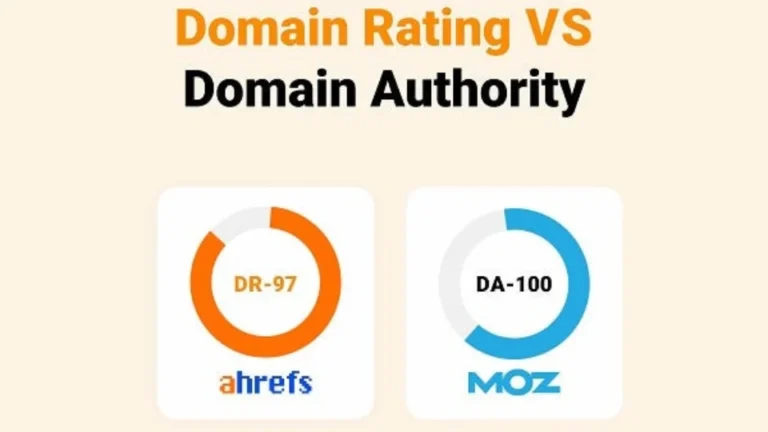The 20-Step SEO Audit Checklist: Boost Your Website’s Performance in 2025
Search engine optimization (SEO) is essential for driving organic traffic and improving your website’s visibility. Conducting a comprehensive SEO audit helps identify areas of improvement and ensures your site aligns with current best practices. This 20-step SEO audit checklist will guide you through the process of evaluating and enhancing your website’s SEO performance.
1. Analyze Organic Traffic

Begin by assessing your website’s organic traffic using tools like Google Analytics. Navigate to “Reports” > “Acquisition” > “Traffic acquisition” to view the performance of the “Organic Search” channel. This provides insights into how users find your site through search engines.
2. Conduct a Site Crawl

Use tools such as Screaming Frog or Semrush to perform a full site crawl. This identifies issues related to crawlability, loading speed, internal linking, structured data, and on-page SEO. Addressing these issues can enhance your site’s overall health and search engine visibility.
3. Improve On-Page SEO

Focus on optimizing key on-page elements:
- Include target keywords in title tags and the first 100 words of content.
- Add relevant internal and external links.
- Use SEO-optimized images with descriptive alt text.
Prioritize pages that target important keywords or have the potential to rank higher.
4. Optimize Internal Linking
Ensure that each page on your website has at least one relevant internal link pointing to it. This prevents orphaned pages and improves crawl depth, making it easier for search engines and users to navigate your site.
5. Check Website Crawlability and Indexability
Verify that search engines can crawl and index your website effectively. Submit a sitemap to Google Search Console, update your robots.txt file as needed, and remove low-quality or duplicate content that may hinder indexing.
6. Audit Site Speed and Performance
Assess your site’s loading speed using tools like Google PageSpeed Insights. Aim for a load time under 3 seconds to reduce bounce rates. Optimize images, enable browser caching, and minimize code to enhance performance.
7. Review Linking Structure
Identify and fix broken or dead links that can frustrate users and negatively impact SEO. Use auditing tools to analyze your internal and external link structure and ensure everything works correctly.
8. Check Mobile Friendliness and Responsiveness
Ensure your website is mobile-friendly and responsive across various devices. Use mobile testing tools to identify and fix any layout or usability issues on smartphones and tablets.
9. Evaluate User Experience (UX)
Assess your website’s UX by examining navigation, layout, and overall design. A user-friendly site encourages longer visits and higher engagement, positively influencing SEO rankings.
10. Audit Site Security Protocols
Implement HTTPS to secure your website and protect user data. An SSL certificate not only enhances security but also serves as a ranking factor in Google’s algorithm.
11. Audit XML Sitemaps and Robots.txt Files
Ensure your XML sitemap is up-to-date and accurately reflects your site’s structure. Review your robots.txt file to confirm that it doesn’t block important pages from being crawled by search engines.
12. Improve Social Media Integration
Integrate social sharing buttons and ensure your content is easily shareable across various platforms. Active social media engagement can drive traffic and enhance your site’s authority.
13. Optimize Google Business Profile
For local SEO, claim and optimize your Google Business Profile. Provide accurate business information, add high-quality images, and encourage customer reviews to improve local search visibility.
14. Review Internal Site Search Functionality
Evaluate your site’s internal search feature to ensure it delivers relevant results. A functional search tool enhances user experience and helps visitors find information quickly.
15. Check On-Page SEO Elements
Review and optimize on-page elements such as meta titles, meta descriptions, header tags, and image alt text. These elements should include relevant keywords and accurately describe the page content.
16. Audit for Duplicate Content
Identify and eliminate duplicate content that can confuse search engines and dilute ranking potential. Use duplication checking tools to detect and resolve content overlaps across your site.
17. Assess Content Quality
Evaluate your website’s content for relevance, accuracy, and engagement. High-quality, informative content that addresses user intent can improve rankings and user satisfaction.
18. Verify Structured Data Implementation
Implement structured data (schema markup) to help search engines understand your content better. This can enhance your listings with rich snippets, improving click-through rates.
19. Monitor Backlink Profile
Analyze your backlink profile to ensure you have high-quality, relevant inbound links. Disavow any spammy or low-quality links that could harm your site’s authority.
20. Set Up Regular SEO Audits
Establish a routine schedule for conducting SEO audits, such as quarterly or bi-annually. Regular audits help maintain your site’s health and adapt to evolving SEO best practices.
Pros and Cons of Regular SEO Audits
| Pros | Cons |
|---|---|
| Identifies technical and content issues | Time-consuming process |
| Enhances user experience and site performance | Requires expertise and tools |
| Improves search engine rankings | May involve additional costs for tools |
| Keeps website aligned with SEO best practices | Continuous effort needed for ongoing success |
Frequently Asked Questions (FAQs)
Q1: How often should I perform an SEO audit?
A: It’s recommended to conduct an SEO audit every 3 to 6 months to ensure your website remains optimized and competitive.
Q2: What tools are best for conducting an SEO audit?
A: Tools like Google Analytics, Google Search Console, Screaming Frog, and Semrush are widely used for comprehensive SEO audits.
Q3: Can I perform an SEO audit myself?
A: Yes, with the right tools and knowledge, you can perform an SEO audit. However, for more complex issues, consulting with an SEO professional may be beneficial.
Q4: What is the difference between a technical SEO audit and a content audit?
A: A technical SEO audit focuses on the website’s infrastructure, such as crawlability and site speed, while a content audit evaluates the quality and relevance of the site’s content.
Q5: Why is mobile optimization important in an SEO audit?
A: With the increasing use of mobile devices, ensuring your website is mobile-friendly is crucial for user experience and is a ranking factor in search engines.
Conclusion
Conducting a thorough SEO audit is vital for maintaining and improving your website’s performance in search engine rankings. By following this 20-step checklist, you can identify and address issues that may be hindering your site’s visibility and user experience. Regular audits ensure your website stays aligned with the latest SEO best practices, helping you achieve sustained online success.







